Despite its diminutive size, New Zealand is deceptively big, and getting around New Zealand requires more time than you’d expect. As a luxury travel advisor and a New Zealand Gold Specialist, I field a lot of questions from clients about how best to get around New Zealand. Amy is one such client. She plans to go to NZ for a few weeks next spring and wants to know if she should rent a car while there, or if the public transportation system is sufficient.
Do you have a burning travel question? Email me at sarah@pointmetotheplane.com and keep an eye out for your question in a future post.
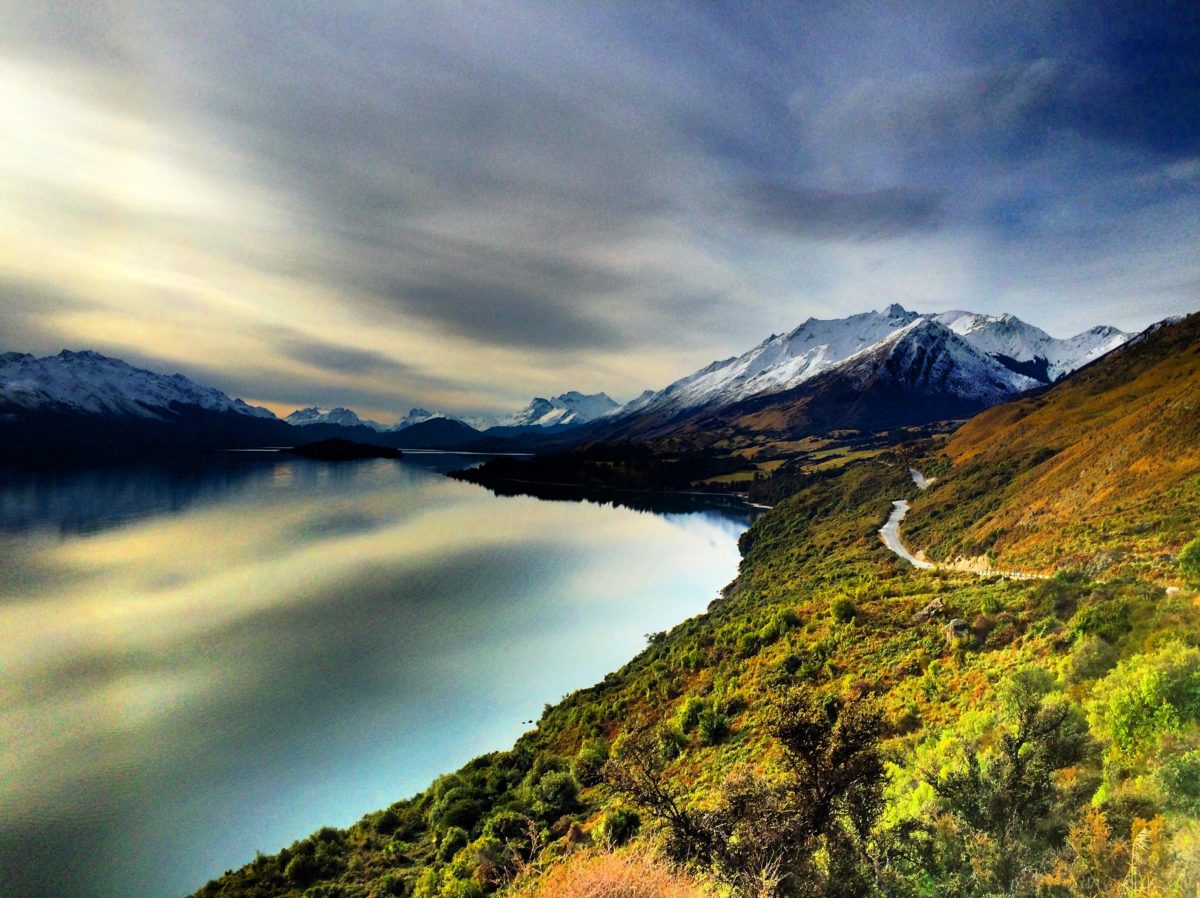
Despite its diminutive size, New Zealand is deceptively big, and it requires more time than you’d expect to get around New Zealand. Roads are narrow, winding, and steep.
Question: What Is Transportation Like In New Zealand?
Hi Sarah,
What is the best way to get around New Zealand? I want to spend about two weeks down there but I can’t decide if I should rent a car or rely on public transportation. I’ll be on both the North and South Islands.
Thanks! Amy
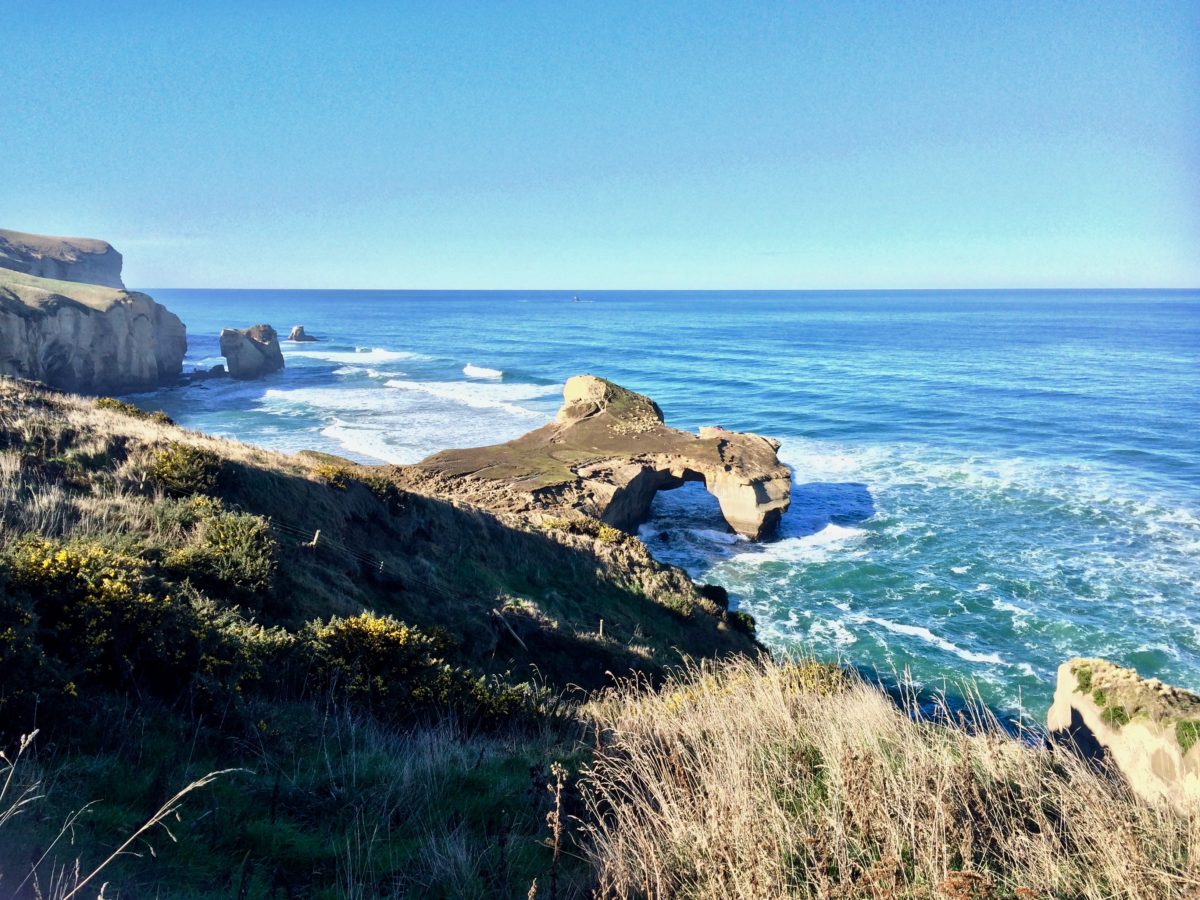
Some of the best sights are well off the beaten track, like this gorgeous beach only accessible by a narrow path down a steep hillside and a man-made tunnel that dates back to the 1800s.
Answer: You Should Rent A Car If You Want To See A Lot
Hi Amy,
The short answer to this is, you really do need a car. New Zealand’s best gems are those that require a car and a bit of a trek to get to.
The long answer, though, is this: Public transportation in New Zealand is good, but it is time-consuming and can be expensive. If you want to visit any off-the-beaten-track locations, (of which there are MANY in NZ), you will definitely want a car to get around New Zealand. However, if you plan on sticking to the tried and true tourist tracks, you could get away without having a car.
The Best Way To Get Around New Zealand
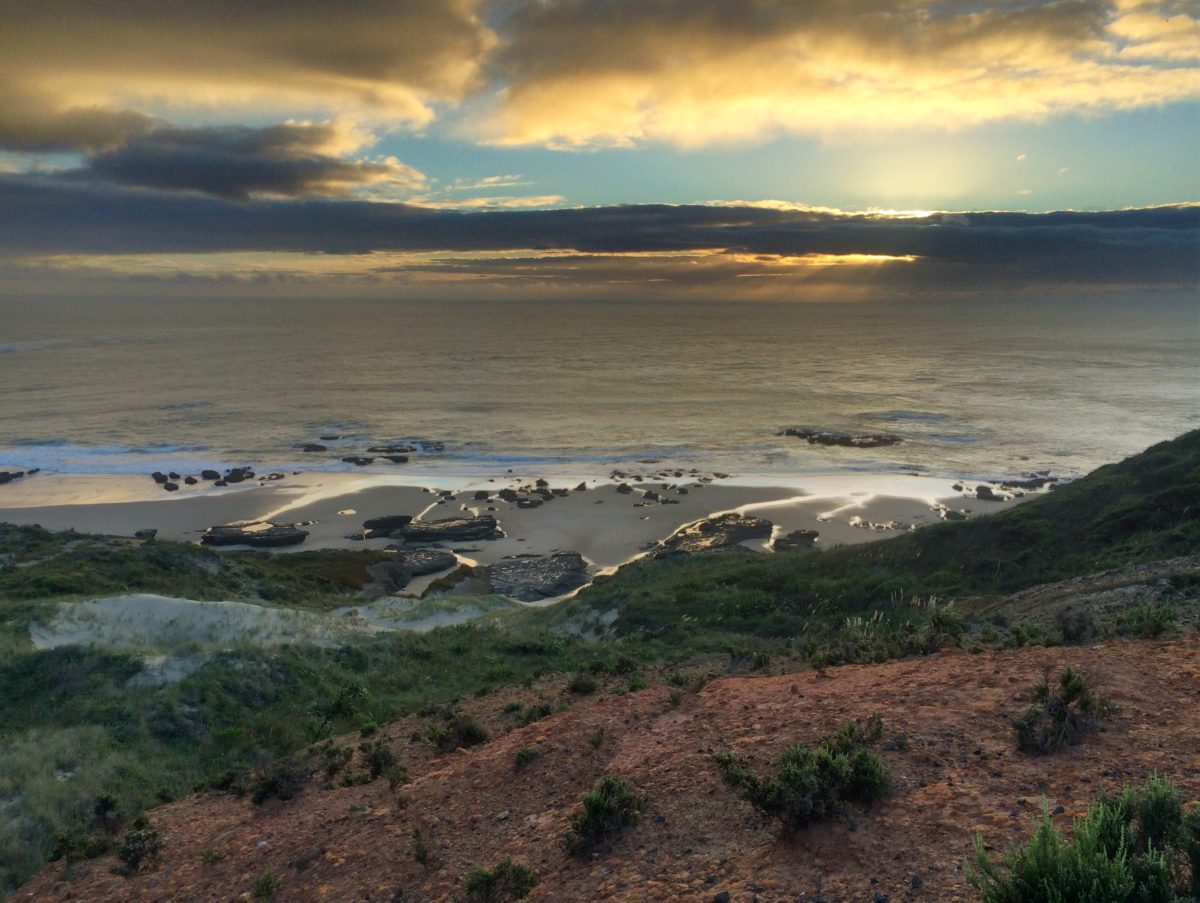
This epic sunset view is down a long dirt road outside of a small town! Some of the best sunsets in New Zealand are seen from remote clifftops.
One of the things I learned during my second trip to New Zealand is that the country is bigger than it looks. While it may only be 300 kilometers (186 miles) between two places, it will take about four to five hours, even if the speed limit is 100 kilometers per hour (60 mph).
The main reason for this is that the roads are narrower, steeper, and windier than those us Americans are accustomed to. New Zealand also doesn’t have multi-lane highways, except on the outskirts of Auckland, Wellington, Christchurch and Dunedin. Most roads are one lane in each direction with semi-frequent passing lanes. When stuck behind a logging truck, or a row of campers, you’re just not going to get anywhere very fast. The influx of tourists in New Zealand means that the roads are busy, especially in high season (December to February).
It can be faster to fly between two places, even if they don’t look all that far apart on the map. This super handy time and distance calculator from Tourism New Zealand helps determine how much time you will need to get around New Zealand.
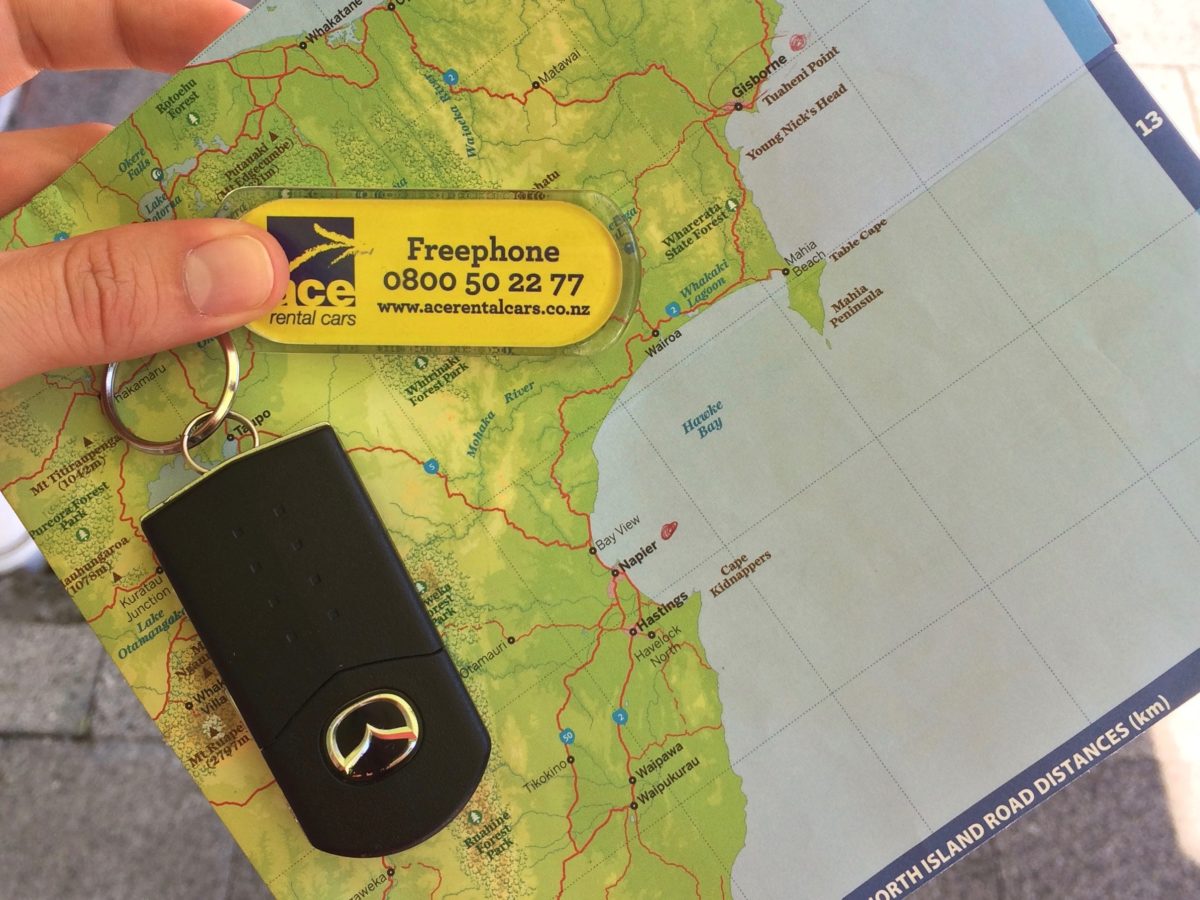
Travel times can be a lot longer than the map makes them look! Use the time and distance planner to determine how much time you’ll need getting around New Zealand.
However, that being said, the bus network across New Zealand is very good. InterCity is the lone national bus company*, and it can get passengers to almost anywhere. There are also regional buses that branch out into the smaller towns and areas that InterCity doesn’t go. Hikers can book with a private shuttle company to get to trailheads.
*Up until 15 July 2018, Naked Bus also provided bus transport across New Zealand. Some travel websites haven’t updated with the closure information. If you’re reading this and have plans to travel with Naked Bus, they announced plans to refund anyone with tickets or passes for later dates. Check your email for details on refunds.
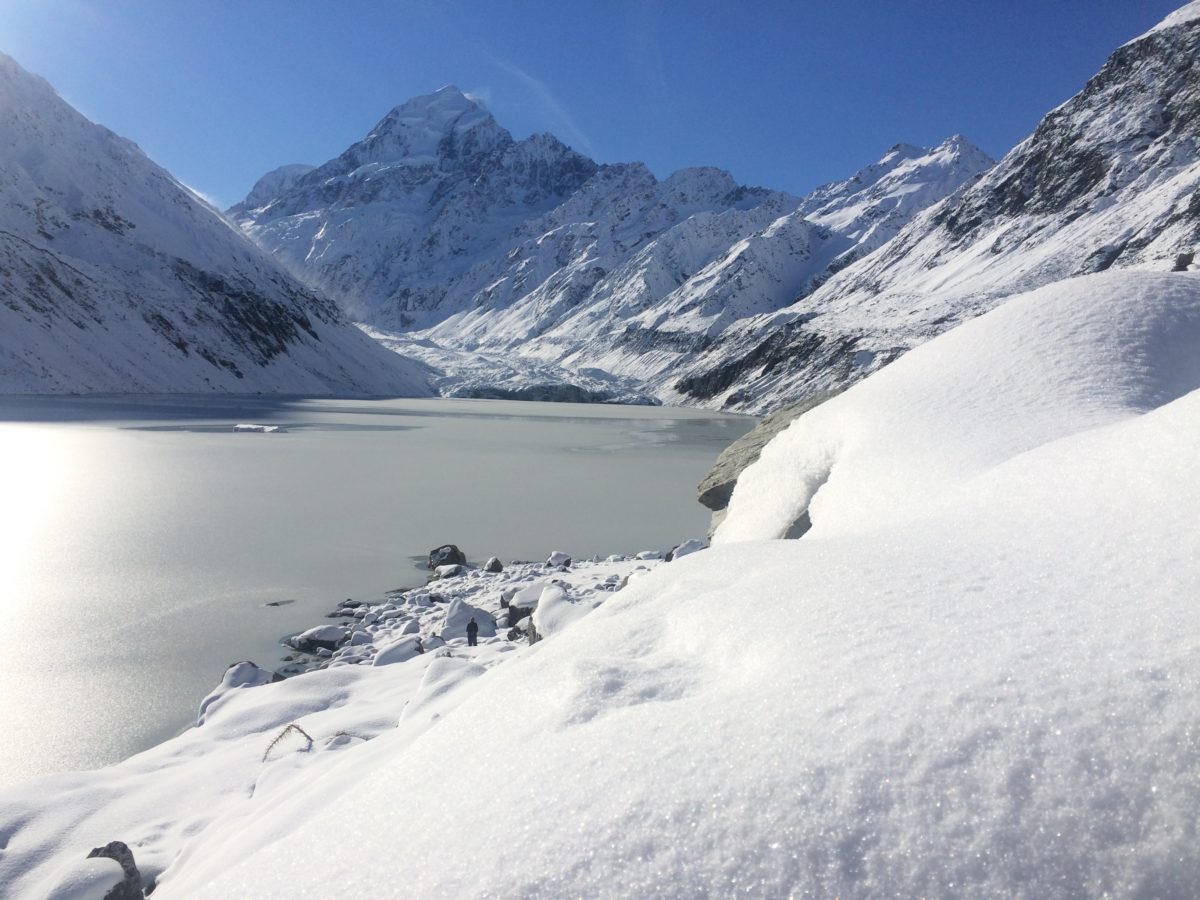
Incredible views like this take time to get to! Plan on at least an hour from the main road, and then another two hour hike!
How’s Public Transportation In New Zealand?
InterCity operates regular bus schedules between all major cities and towns. Holidays affect transport schedules so if you plan on traveling over a holiday, check in advance. These buses stop at various places along the way and often coordinate with other buses to ensure smooth connections.
Because the roads are small and winding, bus travel takes a long time. Travelers need to be aware that going between two places by bus can sometimes take an entire day or more.
Rail travel is another great way to get between New Zealand’s three largest cities. I touch on getting around New Zealand by train below.
Once at your stop, you’ll need to figure out how to get from there to your hotel. Bus stops tend to be near the information center in town, but hostels and hotels aren’t necessarily near anything. If you have plans to hike, then you should coordinate your path getting to the trailhead. This can be easy, if you’re near a town (and so is the trailhead), but it can also be difficult.
In the past, I’ve hitched a ride with people I met or arranged a private shuttle. If you’re traveling on a budget, a Facebook group is a good way to connect with others who might be in your area.
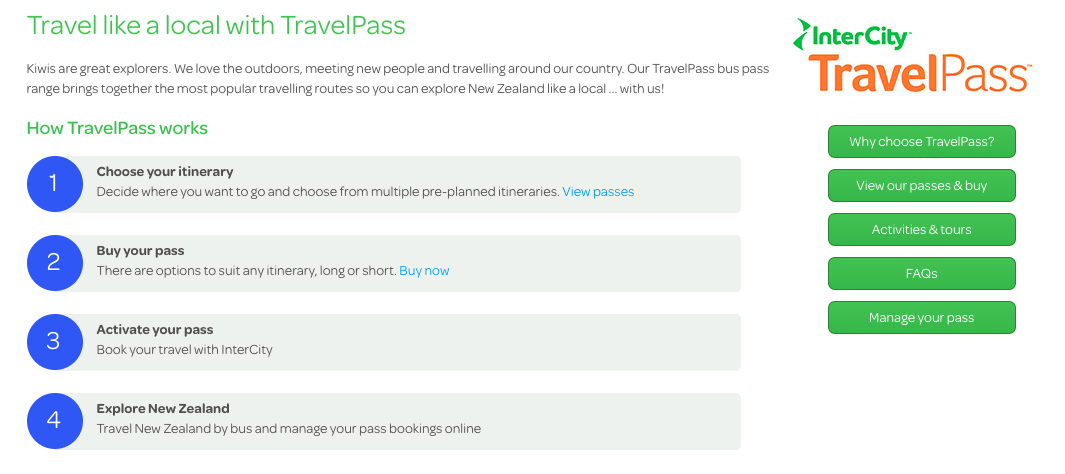
InterCity bus passes can be good or bad, depending on your itinerary
InterCity offers single trip and return tickets as well as various passes. Some hop on/hop off passes include the ferry necessary to go between the North and South Islands. Since it depends a lot on your itinerary, you should do the math before buying a bus pass to see if its worth it.
Experience Public Transportation in New Zealand
Long-distance buses across New Zealand are comfortable, clean, and safe. The driver has a manifest, which they check at every stop, and there are cameras at the front and rear of the buses. Hot food, coffee, and alcoholic drinks are not permitted on InterCity buses; passengers can have small snacks and water bottles or soda that can be closed with a screw-top lid.
City Public Transportation
Each city has its own public transportation network. You do not need to purchase in advance, but it’s possible to purchase a travel pass-card to scan on and off the bus.
You can find each city bus system here: Auckland | Hamilton | Wellington | Nelson | Christchurch | Dunedin
Booking InterCity Buses
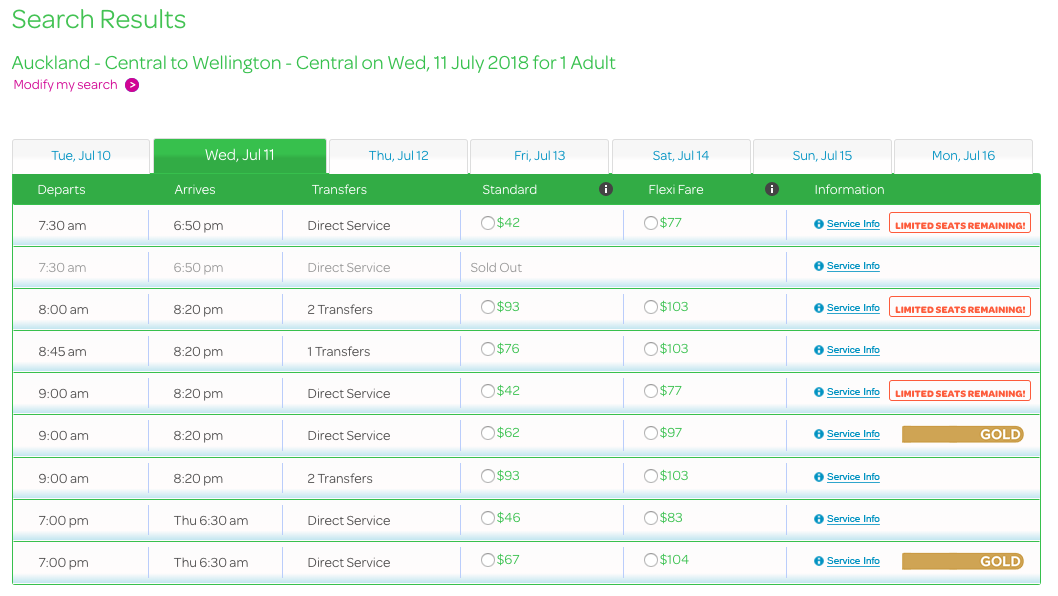
You can find bus schedules online for intercity transport around New Zealand
If you plan on traversing New Zealand by bus, make sure to book your preferred time well in advance during the high season. In the winter and shoulder seasons, it’s safe to book just a few days out; in the summer though, I suggest as early as possible.
The easiest way to book is on InterCity’s website. This allows you to check the various times and dates as well as book your ticket. You will need to show your ticket to the driver too, so either print it out or keep a copy on your phone.
Rail Travel in New Zealand
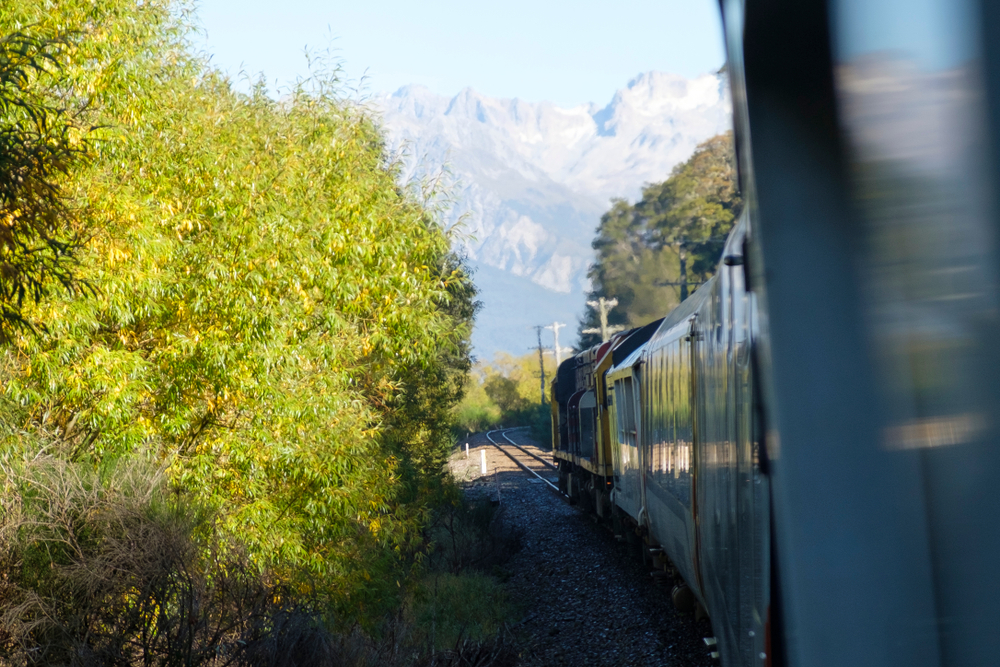
New Zealand’s Tranz Alpine train, which runs between Greymouth and Christchurch, is one of the world’s great train journeys and a unique way to get around New Zealand.
While buses certainly get you to more places across the two islands, there are three major railroads in New Zealand. The Northern Explorer runs between Auckland and Wellington, stopping in Hamilton, National Park (Tongariro Alpine Crossing), and Palmerston North, among others.
Travel from Wellington to Christchurch via the Coastal Pacific*, which uses the Interislander ferry to cross the Cook Strait before picking up the train in Picton. And cross the South Island from Christchurch to Greymouth, on the West Coast, with the Tranz Alpine – one of the world’s greatest train journeys. Find all train schedules and purchase tickets at Great Journeys of NZ.
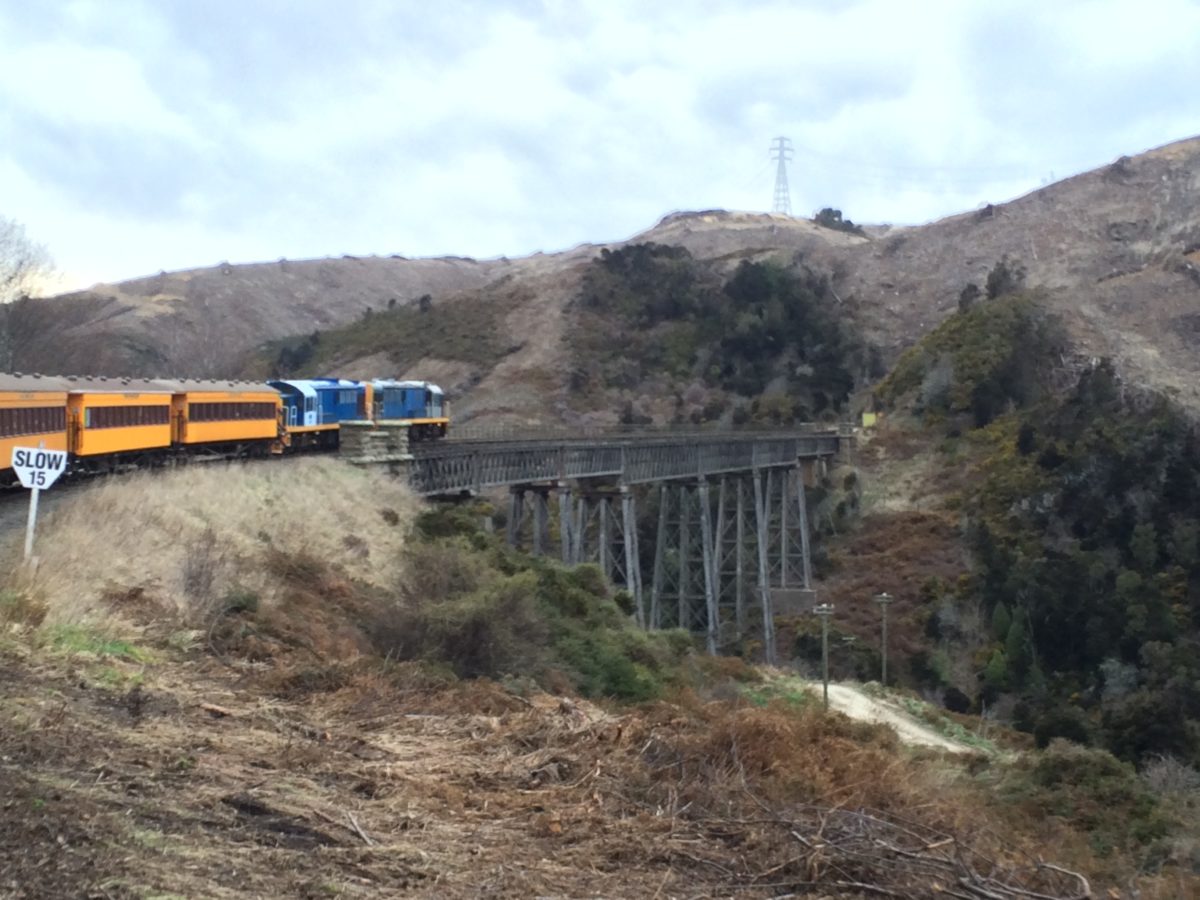
The Taieri Gorge Railway highlights Otago’s gold rush history on a full day exploration of the old railroad.
There are some regional trains in and around Auckland, Wellington, Christchurch, and Dunedin. Some of these are scenic trains primarily used by tourists and not to get from place to place; others are commuter trains, especially in Wellington’s Hutt Valley and Kapiti Coast.
*The Coastal Pacific train ran along the coast between Blenheim and Kaikoura. This rail line was destroyed during the 2016 earthquake and remains indefinitely suspended. You can find updates on the Coastal Pacific rail line here.
Driving in New Zealand
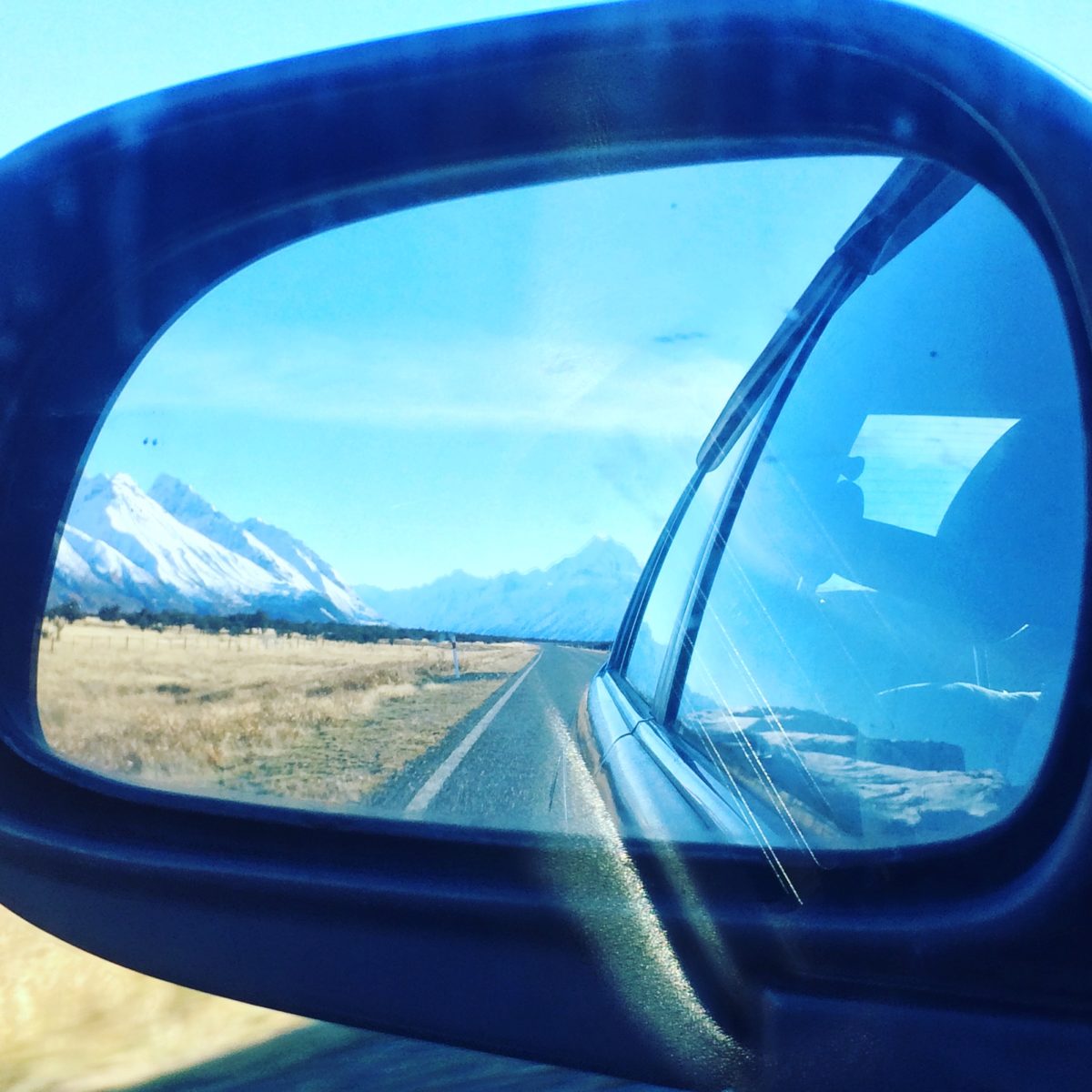
Taking a photo like this is totally fine, since this is the passenger side! Don’t forget that Kiwis drive on the left side of the road.
Driving in New Zealand is incredibly rewarding. Travelers can go at their leisure, stopping for picnic lunches or afternoon treks to hidden beaches. Its my favorite way to get around New Zealand as it allows me the flexibility of stopping any time something catches my fancy.
- Learn about travel reward cards here.
In order to be legal to drive around New Zealand, there are some things to consider. One, you must have a valid drivers license. It needs to be in English, and if its not you must have an English translation of your license. New Zealand also accepts International Drivers Permit, but again, it must be in English. You can legally drive in New Zealand for up to 12 months on your home license.
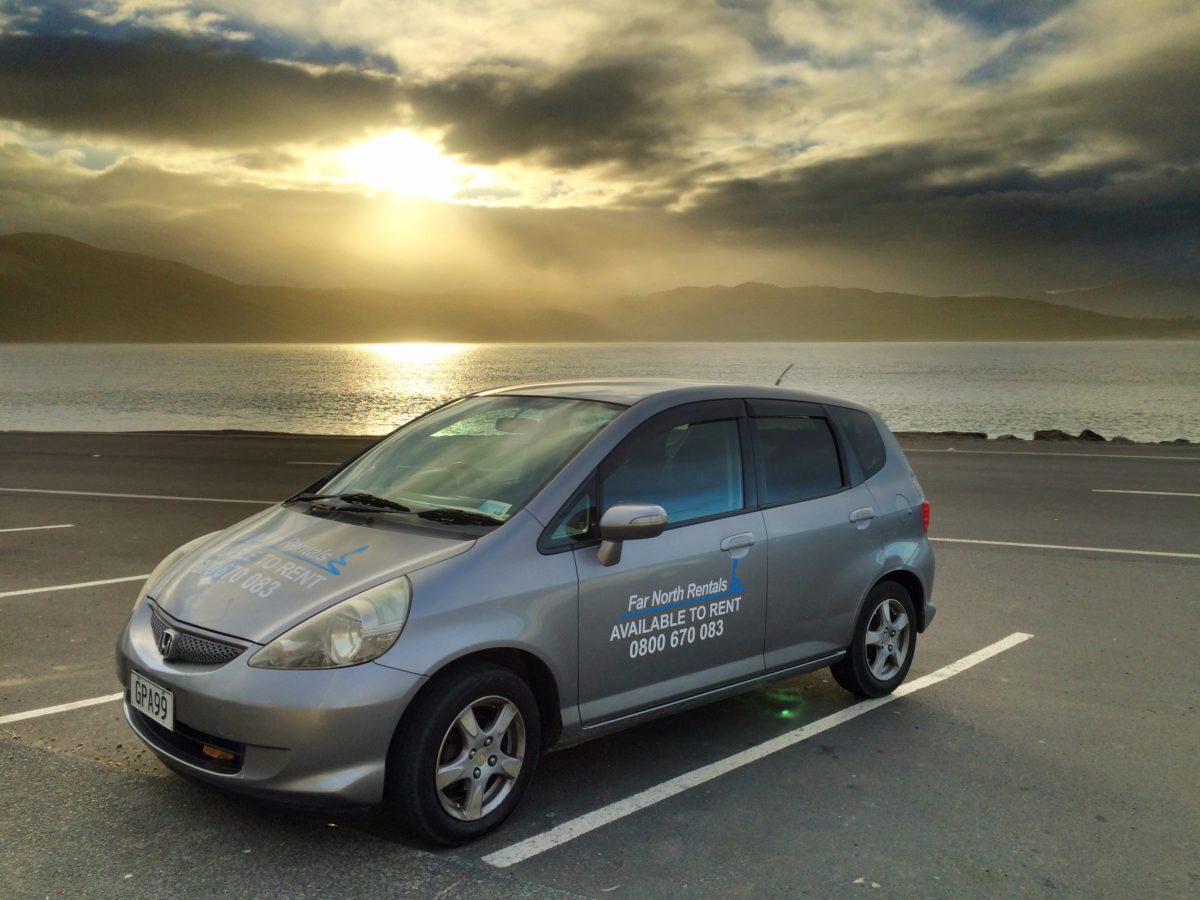
Because so many of the best spots in New Zealand are off the beaten track, renting a car is a great way to travel. You can hire cars in all major cities and at most large and regional airports.
Car hire companies are prevalent in the major cities and at both large and regional airports. You will find all the major brands like Hertz, Avis, Budget, and Europcar, as well as others, like Juicy, Ace Rentals, and Ezi Car Rental.
In some smaller places, there are also local companies. One way hires are very easy to arrange, but they’re often more expensive. Typically, the longer you have the car for, the cheaper the daily rate usually is.
Rental cars might have restrictions on them, as far as what types of roads you are permitted on. Some don’t permit drivers to take the car on unsealed roads. In New Zealand, this can be anything from a gravel road to a beach!
New Zealand Rules Of The Road
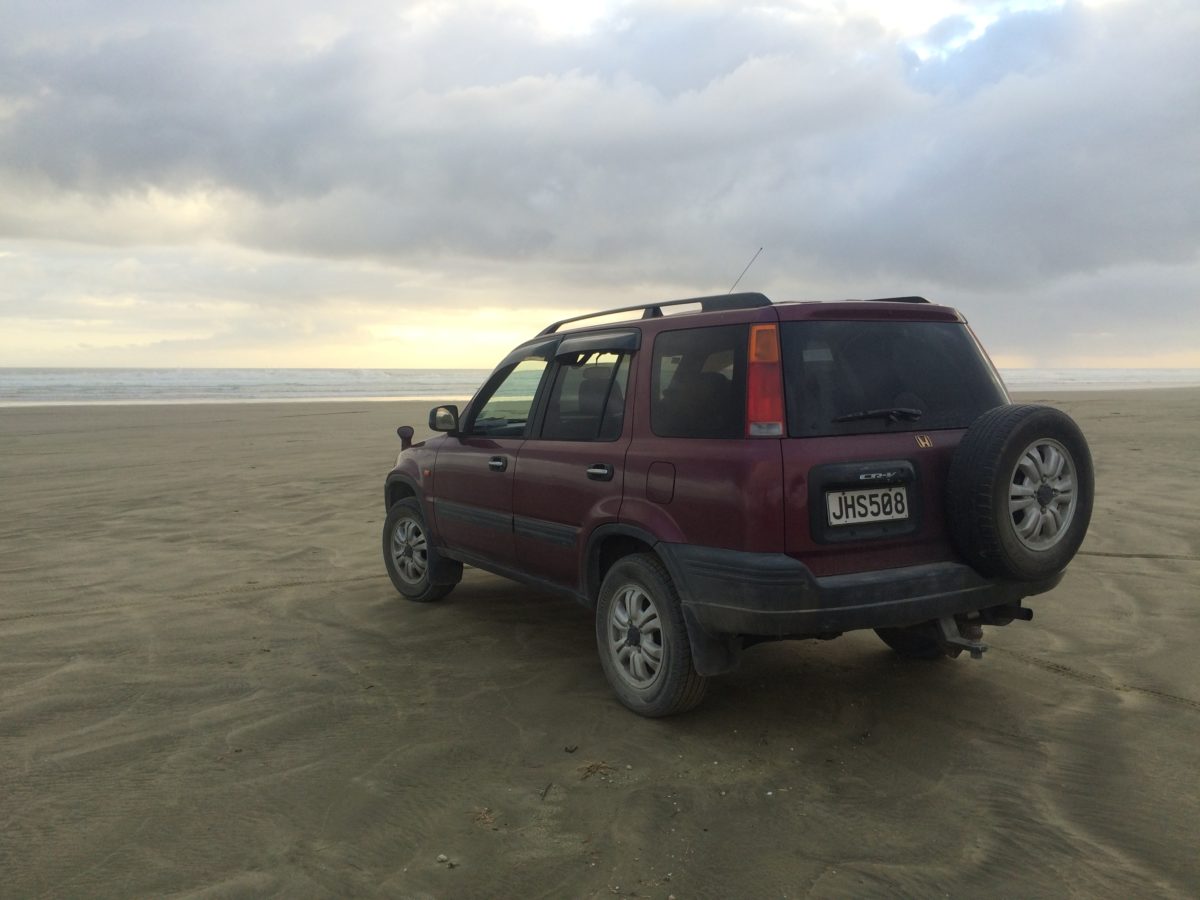
Some of the roads in New Zealand are also beaches, which are awesome to drive, but rental cars might be prohibited from driving on them. Make sure you are aware of where you can and cannot drive when hiring a rental car to get around New Zealand!
Most roads in New Zealand are well-maintained and signage is clear. However, in recent years there have been a spate of very serious accidents caused by visitors either not obeying the rules of the road or ignoring common sense.
Traffic Laws in New Zealand
New Zealanders drive on the left, as in Australia and the UK. It’s illegal to make a left on red, even if there’s no oncoming traffic, and you should always give way to all vehicles not turning.
Speed limit signs are round with a red border and have the speed listed in the middle as seen below. In rural areas, it’s usually a white sign with a black slash; this indicates that the speed is the maximum of 100kph.
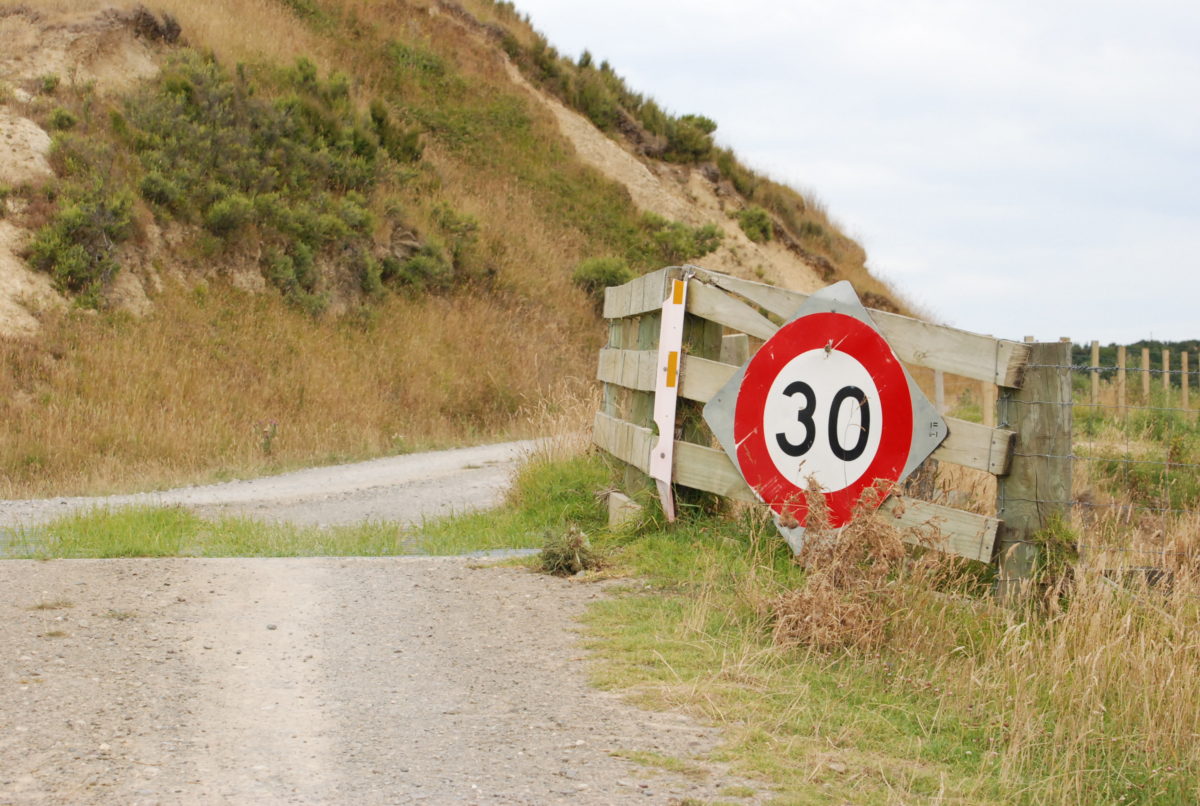
Signs might not be what you are used to from home. This circular sign with a number in the middle is a speed limit sign. You can familiarize yourself with road signs on the New Zealand tourism website prior to travel.
Because roads are narrow, twisty, and steep, drivers absolutely must exercise caution. Do not stop in the middle of the road to take a picture. I cannot begin to tell you the number of times I have come around a corner on a main road only to find a camper van stopped mere meters away with people standing in the road taking pictures.
If you must drive slowly, use your flashers to indicate your lower speed. Only overtake others when there is either a passing lane or a dashed line in the center of the road.
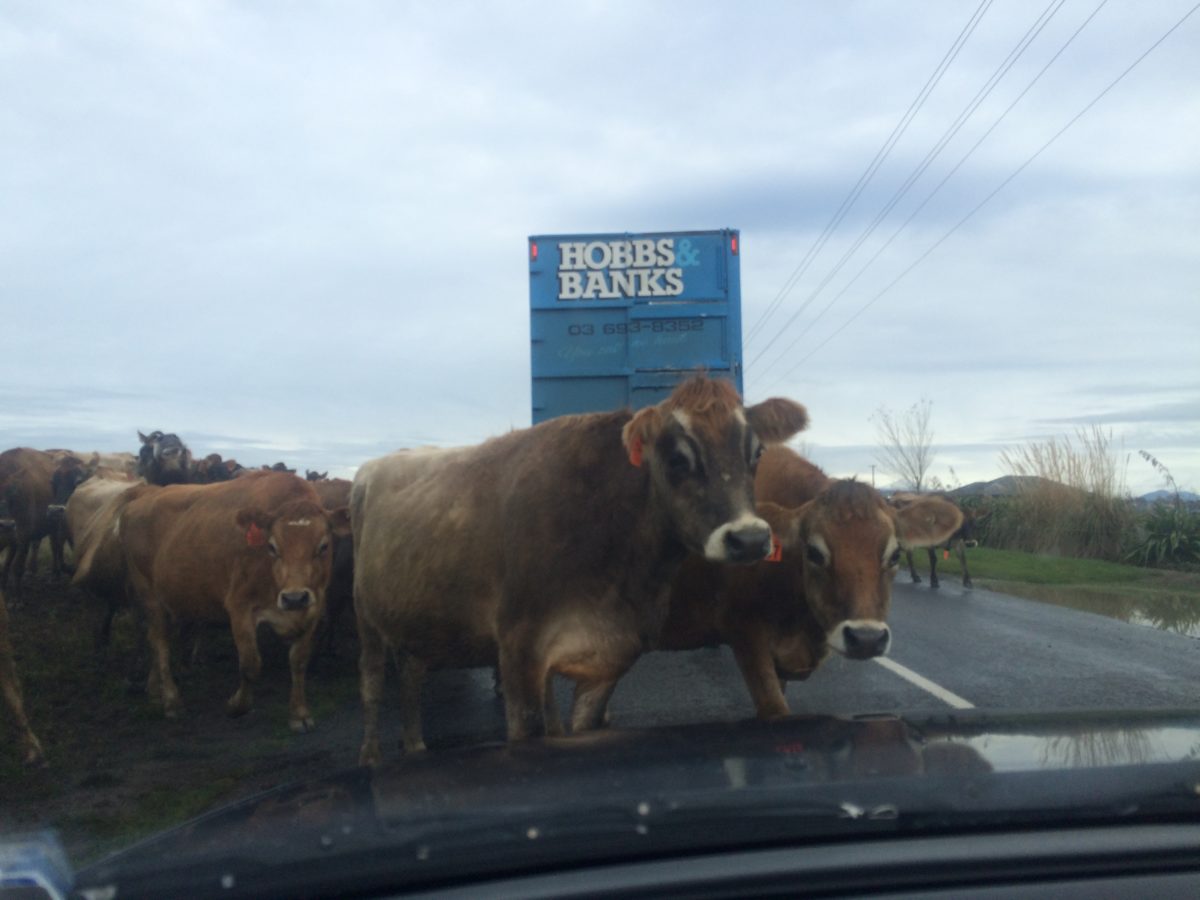
On rural roads, you need to be aware of animals and farm equipment in the road. This photo was taken during the Gypsy Day drives near Christchurch, in which we were stopped for ten minutes as the cows milled around us on their way to the paddock.
On rural roads, beware of animals in the road. This can be anything from cattle and sheep drives to local pigs.
Pay careful attention to weather while driving. In the mountains, rain can turn to ice quickly, making the road even more dangerous. Avoid unsealed roads, if possible, and be aware of slips or flash flood potential especially in remote areas. If you are traveling in the mountains over winter, make sure you have snow chains and know how to use them.
Drunk driving laws are strict – and the penalty severe if you’re caught driving under the influence. If you are going wine tasting, err on the safe side and join an organized tour, hire a driver or Uber. I also always suggest not driving immediately following a long flight (i.e. after flying in from the States) and taking a break anytime you feel tired.
**
Amy, I hope this answers your question on the best way to get around New Zealand. I’m sure you’ll have a great time exploring both the North and South Islands! For more on traveling around New Zealand, check out some of my destination posts.
Send all your travel logistics questions to me, resident destinations expert and travel advisor Sarah. Keep an eye out for the answers in upcoming posts. Questions may be edited for clarity or length.
*
Sarah is a luxury travel advisor and avid traveller. When she isn’t writing for Point Me To The Plane you can find her crafting custom itineraries for clients or exploring the far reaches of our wonderful planet. Read more about her adventures at The Girl With the Map Tattoo.
The responses below are not provided or commissioned by the bank advertiser. Responses have not been reviewed, approved or otherwise endorsed by the bank advertiser. It is not the bank advertiser's responsibility to ensure all posts and/or questions are answered.
2 comments
Hi Sarah, thanks your detailed post. I’m travelling to NZ next month. I am still confused either to go with public transport or personal car option. I indeed wish to reduce the travel cost, but on the same time want to enjoy the drive way (a friend mentioned, driving in NZ is nice).
If you want the freedom of the car, and are comfortable with it, I would say go with the car. It’s not expensive as car rental across the US/Europe (and a favourable exchange rate at the mo). However, I will caution that you might find availability low for next month, especially if you want a SUV/crossover. Have fun! NZ is incredible!